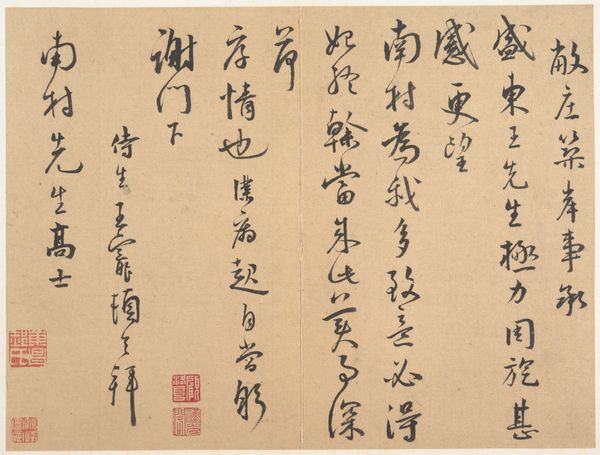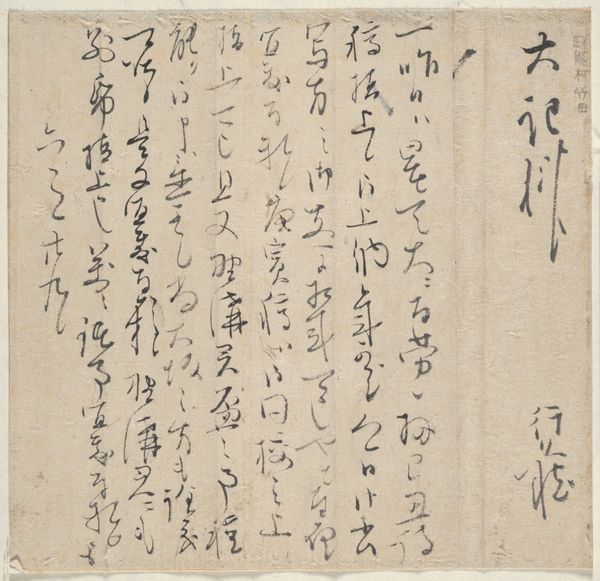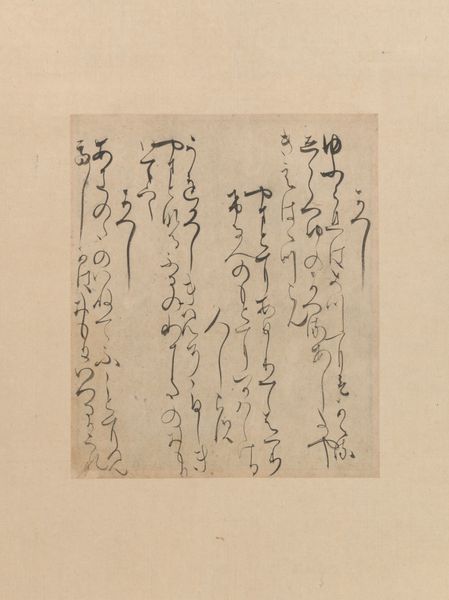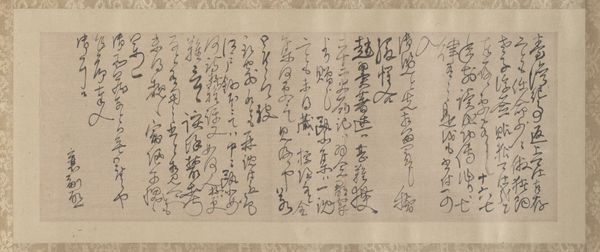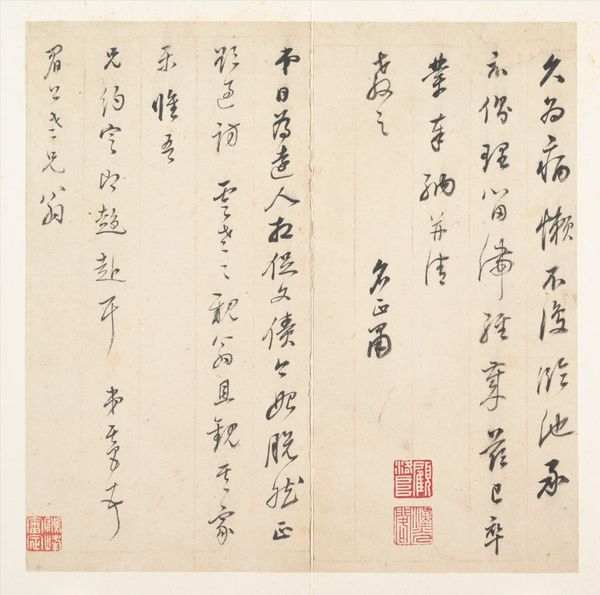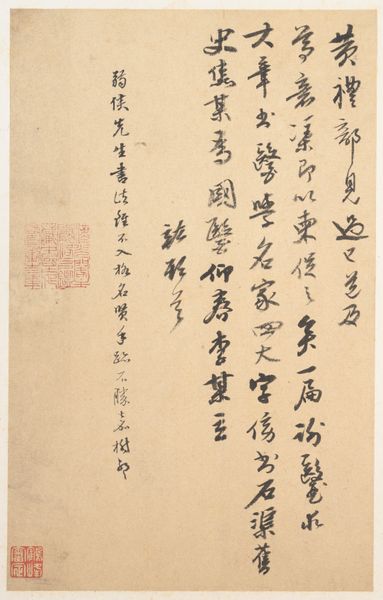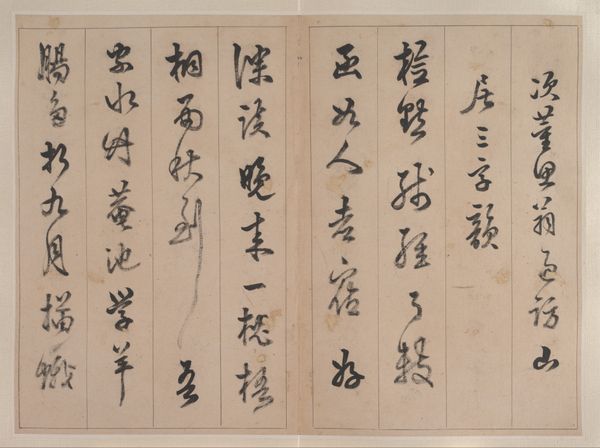
drawing, paper, ink
#
drawing
#
toned paper
#
hand-lettering
#
asian-art
#
hand drawn type
#
hand lettering
#
paper
#
tea stained
#
22_ming-dynasty-1368-1644
#
ink
#
hand-drawn typeface
#
fading type
#
calligraphic
#
ink colored
#
china
#
pen work
#
calligraphy
Dimensions: 8 1/2 x 15 1/4 in. (21.6 x 38.7 cm)
Copyright: Public Domain
Curator: Before us we have "Letter to Yao Zhi," a work created between 1501 and 1583 by Wen Jia, during the Ming Dynasty. Executed with ink on paper, this piece now resides at the Metropolitan Museum of Art. Editor: It strikes me immediately as something incredibly intimate. The toned paper and delicate strokes of ink give it a sense of fragility and immediacy, as though we are looking at something intensely personal. Curator: Indeed. Calligraphy in this period transcended mere writing; it embodied the artist's spirit, moral character, and learning. Wen Jia wasn't simply communicating information, he was presenting a part of himself. The rhythmic brushstrokes, the careful balance between form and space...all deeply symbolic. Editor: And within that carefully constructed presentation, where does intimacy exist? Because that’s what intrigues me. Letters can be performative. Was it ever actually sent or simply practice, for instance? Curator: That’s a vital question. While we can’t know for sure if it was sent, consider the recurring motifs within the brushstrokes. The density of ink and the varying pressure evoke the ebbs and flows of human emotion. There's a consistent visual language that builds empathy. Editor: And yet, so few of us can actually decipher the characters! We lose a crucial part of the intended impact. Today, how much of the intent rests with the aesthetic, rather than the textual meaning? We are forced to consider Wen Jia’s skill in the hand lettering rather than the content of what they hoped to communicate to Yao Zhi. Curator: You're right. Meaning has certainly shifted. However, even if we don’t grasp the literal words, the energy of the writing style still communicates across time and cultures. Look at the confident sweeps of the brush versus the thinner, hesitant lines. Don't those visual contrasts mirror the complexities of human relationships themselves? The symbolic power transcends pure literacy. Editor: Perhaps. The act of writing itself then becomes the primary message—a testament to connection and intention, irrespective of decipherable content. The aesthetic speaks louder than any politics in the literal prose that, sadly, we may never know. Curator: Precisely! We are left contemplating the universality of human connection through the artistry of its presentation. Editor: Beautifully said.
Comments
No comments
Be the first to comment and join the conversation on the ultimate creative platform.


